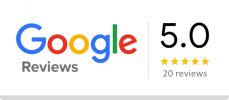In the fast-paced world of digital business, if your website delivers results you are a winner!. Your website is more than a brochure it’s a lead-generating machine. Your website should have homepage must haves for better conversions including a good contact form. And one of the most powerful tools on that machine is your contact form. Including clear, user-friendly contact forms is one of the essential homepage must-haves for better conversion, helping guide visitors toward taking meaningful action
It might seem simple: a few fields, a submit button, and maybe a thank-you message. But done wrong, a contact form can destroy your chances of turning visitors into customers. Done right, it becomes a frictionless entry point that converts traffic into tangible business leads.
In this post, we’ll break down the role of contact forms in websites conversions, common mistakes businesses make, and how to optimise yours for maximum results.
Why Contact Forms Matter
When someone lands on your website and likes what they see, what’s next? How do they take action?
A well-placed, user-friendly contact form bridges the gap between curiosity and conversion. It allows potential clients to reach out, ask questions, request quotes, or schedule a consultation all without having to pick up the phone or open their email.
Contact Forms Offer:
- Convenience: Instant, 24/7 access to you
- Lead Capture: Data collection on interested users
- Automation: Auto-responders and CRM integrations
- User Tracking: Ability to track form submissions and behavior
Common Contact Form Mistakes
Even though contact forms are common, most websites get them wrong. Here’s what not to do:
1. Too Many Fields
Asking for too much information upfront scares users away. Keep it simple: name, email, message (and phone if necessary). Every extra field increases drop-off.
Fix: Only ask for what you truly need to take the next step.
2. Poor Mobile Experience
Many users will find your site on their phones. If your form is hard to tap, misaligned, or doesn’t auto-scroll, you’re losing leads.
Fix: Test your form across all screen sizes.
3. No Confirmation or Feedback
After clicking “Submit,” if nothing happens or the user sees a blank screen, they’ll wonder if it even worked.
Fix: Show a clear success message and/or redirect to a thank-you page.
4. No Incentive to Fill It Out
“Contact us” is vague and uninspiring. Give people a reason to act.
Fix: Use value-driven CTAs like “Get a Free Quote” or “Book Your Free Strategy Session.”
5. Spam Vulnerability
Forms without protection (like reCAPTCHA or honeypots) invite spambots to flood your inbox.
Fix: Use anti-spam tools and validation measures.
Elements of a High-Converting Contact Form
So what makes a contact form perform well? Let’s break down the essentials.
1. Keep It Short and Focused
The golden rule: less is more. Start with the basics and expand only when necessary. Example:
- Name
- Message
- [Optional] Phone Number or Budget
For service-based businesses, you can also use dropdowns like:
- “What service are you interested in?”
- “How soon do you need help?”
2. Smart Placement
Don’t bury your form on a single “Contact” page. Use it in:
- Sidebars
- Pop-ups (sparingly)
- Service pages
- Blog posts
- Homepage footer
Bonus: Try embedding a mini-form in your pricing or testimonial section for strategic engagement.
3. Strong, Clear Call-to-Action
Use CTA buttons that are specific and action-oriented. Instead of “Submit,” try:
- “Get My Free Quote”
- “Schedule a Call”
- “Let’s Talk”
- “Request a Callback”
Also, use contrasting button colors that grab attention without clashing with your brand palette.
4. Trust Indicators
Include elements that reinforce trust next to your form, such as:
- Privacy note: “We’ll never share your details.”
- Testimonials or reviews
- Security badges or logos
5. Automation & Follow-Ups
Use form plugins or CRM tools that send:
- Auto-responders: “Thanks for getting in touch – we’ll reply within 24 hours.”
- Internal notifications: Email or Slack alerts to your team
- CRM integrations: Add leads directly to your sales pipeline (HubSpot, Mailchimp, etc.)
Real-World Example: Before and After
Let’s say you’re a website design agency. Here’s a weak form:
[Old Version]
- Name
- Phone
- Company Name
- Budget
- Project Timeline
- Message
- [Submit Button]
Now here’s an optimised version:
[New Version]
Let’s Bring Your Website Idea to Life. Get a free 15-minute consultation. Fill in the details below.
- Name
- Project Type (Dropdown)
- [CTA Button: Book My Free Call]
The new version is:
- Emotionally compelling
- Less intimidating
- Easier to complete
- More action-focused
Best Contact Form Plugins (for WordPress)
If your site is built on WordPress, here are a few tools we recommend:
- WPForms – Drag-and-drop builder, easy for beginners.
- Gravity Forms – Advanced options, great for developers.
- Ninja Forms – Good balance of features and usability.
- Fluent Forms – Lightweight, fast, and feature-rich.
- Forminator – Stylish and integrates with marketing tools.
For Shopify users, tools like Form Builder + HubSpot Forms, or native contact templates can work well too.
Advanced Tactics: Go Beyond Basic Forms
If you’re ready to take your contact forms to the next level, try:
- Conditional Logic: Show different fields based on user answers.
- Multi-Step Forms: Break long forms into bite-sized steps.
- Exit-Intent Forms: Trigger a form as the user starts to leave.
- Pre-Filled Forms: Auto-fill user info from URL parameters or past visits.
- A/B Testing: Try different versions of your form to see what converts best.
When to Avoid Using a Form
In some cases, a contact form may not be ideal—especially when:
- Users need urgent support (live chat or phone is better)
- You want to pre-qualify leads (use a booking tool instead)
- Your audience prefers instant messaging (WhatsApp, Facebook Messenger)
Remember: A contact form is one tool, not the only one.
Final Thoughts
Your contact form is more than just a submission tool, it’s a gateway to conversations, leads, and sales. If it’s clunky, confusing, or buried, you’re leaving money on the table.
Make sure your forms are:
- Easy to find
- Easy to complete
- Mobile-friendly
- Fast and secure
- Action-oriented
With just a few improvements, your form can become one of the highest-converting assets on your website.
Need help optimising your contact forms or overall website design?
If you need expert help, our team specialises in high-converting website design Auckland businesses trust to generate more leads and grow online. Contact us for a free consultation or audit.

